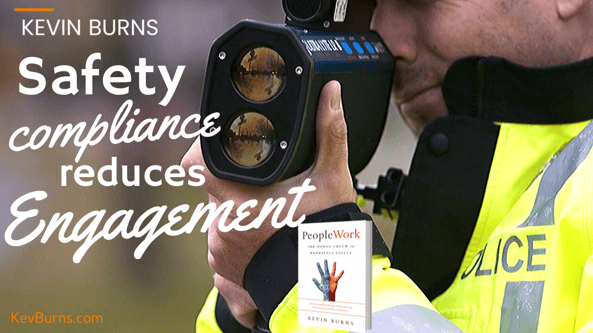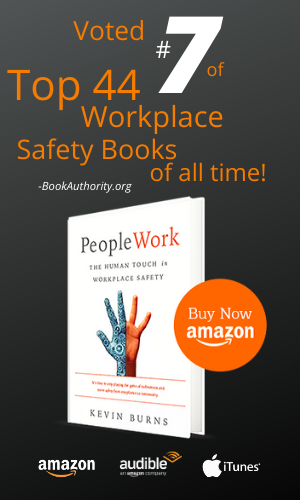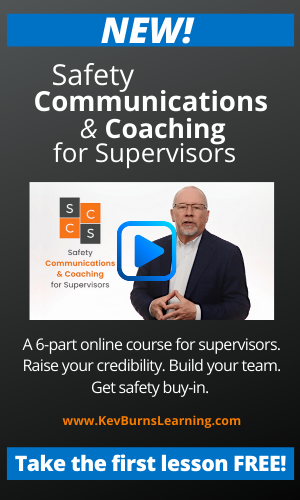Safety Compliance Reduces Engagement
 Driving along the highway, you look down at the speedometer and confirm that you are travelling at exactly the speed limit. Suddenly, you see a police car at the side of the highway with a radar gun pointed in your direction. Despite that you just confirmed that you were travelling the speed limit, you ease up on the accelerator anyway.
Driving along the highway, you look down at the speedometer and confirm that you are travelling at exactly the speed limit. Suddenly, you see a police car at the side of the highway with a radar gun pointed in your direction. Despite that you just confirmed that you were travelling the speed limit, you ease up on the accelerator anyway.
You were not speeding but for a moment you doubted yourself. As a result, you suddenly overcompensated creating a higher-risk situation for the other drivers by driving under the limit on a busy road. In that moment, you were more worried about avoiding a ticket than you were confident that you were driving correctly.
A police car handing out tickets is an exercise in compliance. Driving the speed limit voluntarily is done through being engaged in your driving, leaving yourself enough time to arrive on time and by a high level of awareness in road and traffic conditions – as well as caring about your own safety and the safety of those around you. So, what has this got to do with building better engagement in the safety program?
Control leads to compliance; autonomy leads to engagement
You want employees to care about their safety. And not only to care about their own safety but the safety of their fellow workers too. You want them to know the rules and follow them, not just when you’re watching them. You want them to come together as a team and to take an active role in safety. You want them to take ownership of the safety program. You want them to step up and speak up. You want them to care about the work they do and the people they do that work with.
If you'd like to get started on improving your ability to lead your team, then take the Free Preview of the Safety Communications & Coaching for Supervisors course. 40-minutes of video instruction, summary sheet download PDFs and a companion MP3 audio version to take with you on the go. And it's free to get started.
However, in an effort to get compliance today, are you circumventing and undermining the long-term employee engagement you say you want?
If all you are seeking to achieve is short-term safety compliance, you are making your own job infinitely harder.
Daniel H. Pink in his book To Sell Is Human: The Surprising Truth About Moving Others points out that engagement in the work won’t be achieved by tightly controlling the employees. Employees want to get there under their own steam. And as Pink points out, “Control leads to compliance; autonomy leads to engagement.”
If all you are seeking to achieve is short-term safety compliance, you are making your own job infinitely harder. No one likes to come to work and told what to do and how to do. Do that and you are going to have a workforce lacking motivation and initiative. They will do just enough to not get fired. And you will have to continue to police them. It will eat away at your time, your energy and leave you exasperated wondering how you get your team to buy-in to the safety program.
 In another of Pink’s books, Drive: The Surprising Truth About What Motivates Us, he writes “While complying can be an effective strategy for physical survival, it’s a lousy one for personal fulfillment. Living a satisfying life requires more than simply meeting the demands of those in control. Yet in our offices and our classrooms we have way too much compliance and way too little engagement. The former might get you through the day, but only the latter will get you through the night.”
In another of Pink’s books, Drive: The Surprising Truth About What Motivates Us, he writes “While complying can be an effective strategy for physical survival, it’s a lousy one for personal fulfillment. Living a satisfying life requires more than simply meeting the demands of those in control. Yet in our offices and our classrooms we have way too much compliance and way too little engagement. The former might get you through the day, but only the latter will get you through the night.”
A tale of two companies
Take your own industry. One company can have high levels of employee engagement and stellar safety performance while another company can’t seem to get their employees motivated to do safety at all. Even though the legislation is the same for both companies, one meets it easily and the other struggles. The difference is the approach. With one company, they are concerned with meeting compliance minimums but not engagement. The other takes a longer view of engaging their people knowing that an engaged workforce simply does better, more consistent work.
When you make people feel like they are being controlled, you lose their hearts and engagement in the work.
If you want to achieve safety without heavy doses of enforcement, you cannot ignore the science of how humans behave and what they respond favorably to. Traditionally, safety has been focused on getting employees to comply with rules and procedures and ignoring what employees respond favorably to in their work. Employees end up giving up autonomy and engagement in favor of compliance and procedures. When you make people feel like they are being controlled and told what to do and how to do it, you lose their hearts and engagement in the work.
Rules versus standards
Compliance only matters in the moment. However, engagement is the long-term strategy that results in more employee accountability and better buy-in to the safety program. If all you want from your people is compliance, it will cost you their engagement. You will pay the price by always having to enforce them into more compliance. And, you will get neither employee engagement nor employee buy-in.
Compliance is about rules and demands - that's why it's called compliance. Engagement, though, is about standards. Asking employees to live up to a standard will be easier than forcing them to follow rules. Employees will not buy-in to rules that are forced upon them but they will buy-in to standards that they have a hand in determining. You will not achieve employee engagement and safety hearts and minds through compliance. But, you most certainly will get compliance if you have your employees' engagement.
-- Take the FREE preview lesson of Kevin's course Safety Communications & Coaching for Supervisors. 40-minutes of video instruction, summary download PDFs and a companion audio MP3 version to take with you on the go. SCCS is an online course to help energize safety, build teamwork, and get employee buy-in.
Take the FREE preview lesson of Kevin's course Safety Communications & Coaching for Supervisors. 40-minutes of video instruction, summary download PDFs and a companion audio MP3 version to take with you on the go. SCCS is an online course to help energize safety, build teamwork, and get employee buy-in.
Kevin Burns, consultant/author, works with smart, caring companies to energize safety culture, build teamwork, and get employee buy-in.
KevBurns Learning is committed to to helping companies improve safety by improving people, through creative learning materials, virtual strategy sessions, safety meeting presentations, and team coaching programs.
In 2020, BookAuthority.org named PeopleWork #7 of The Top 44 Workplace Safety Books of All Time. Buy yourself a copy of PeopleWork: The Human Touch in Workplace Safety and give another as a gift to a colleague.
Subscribe to Kevin's YouTube channel.
Subscribe to Kevin’s Blog.


